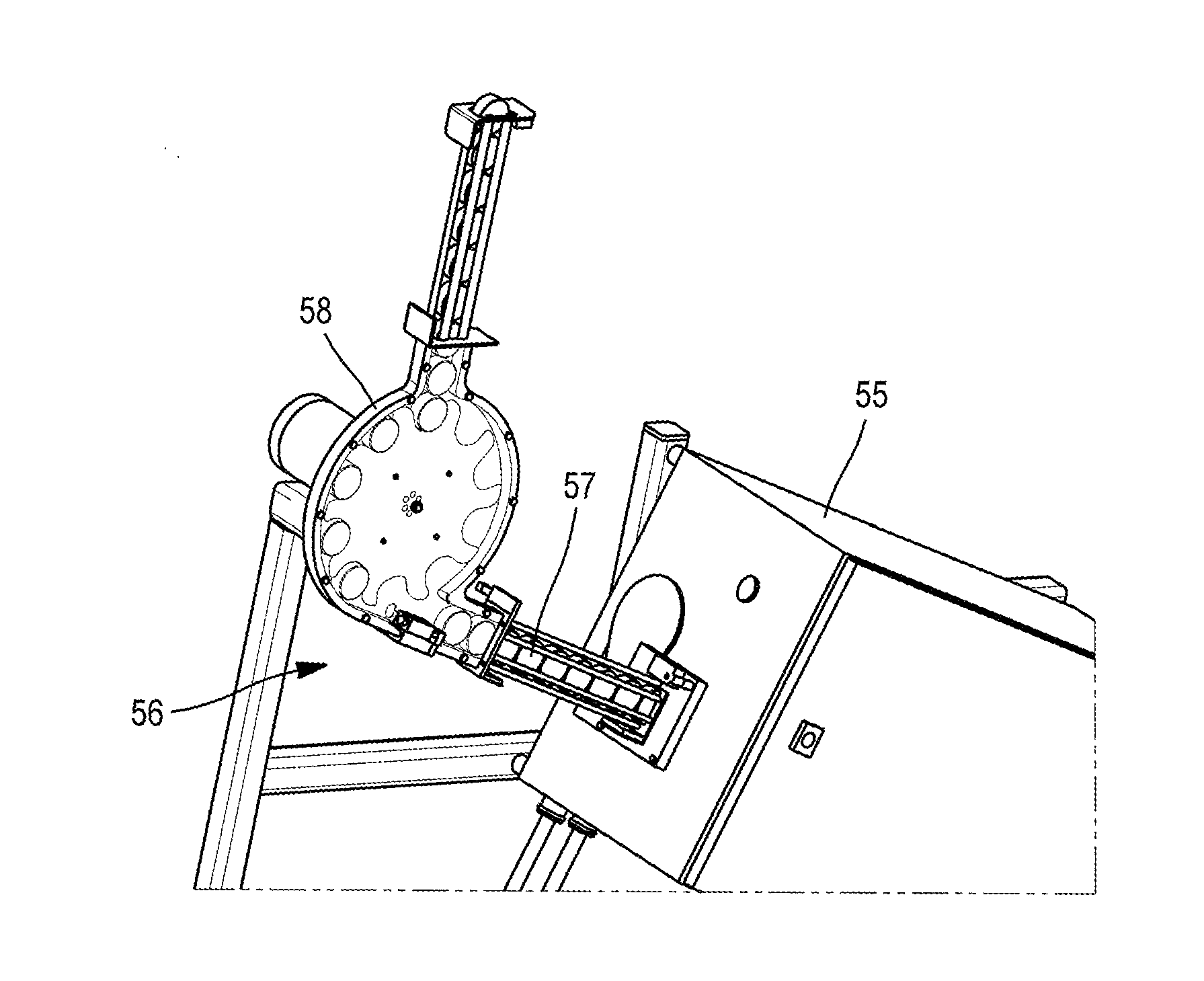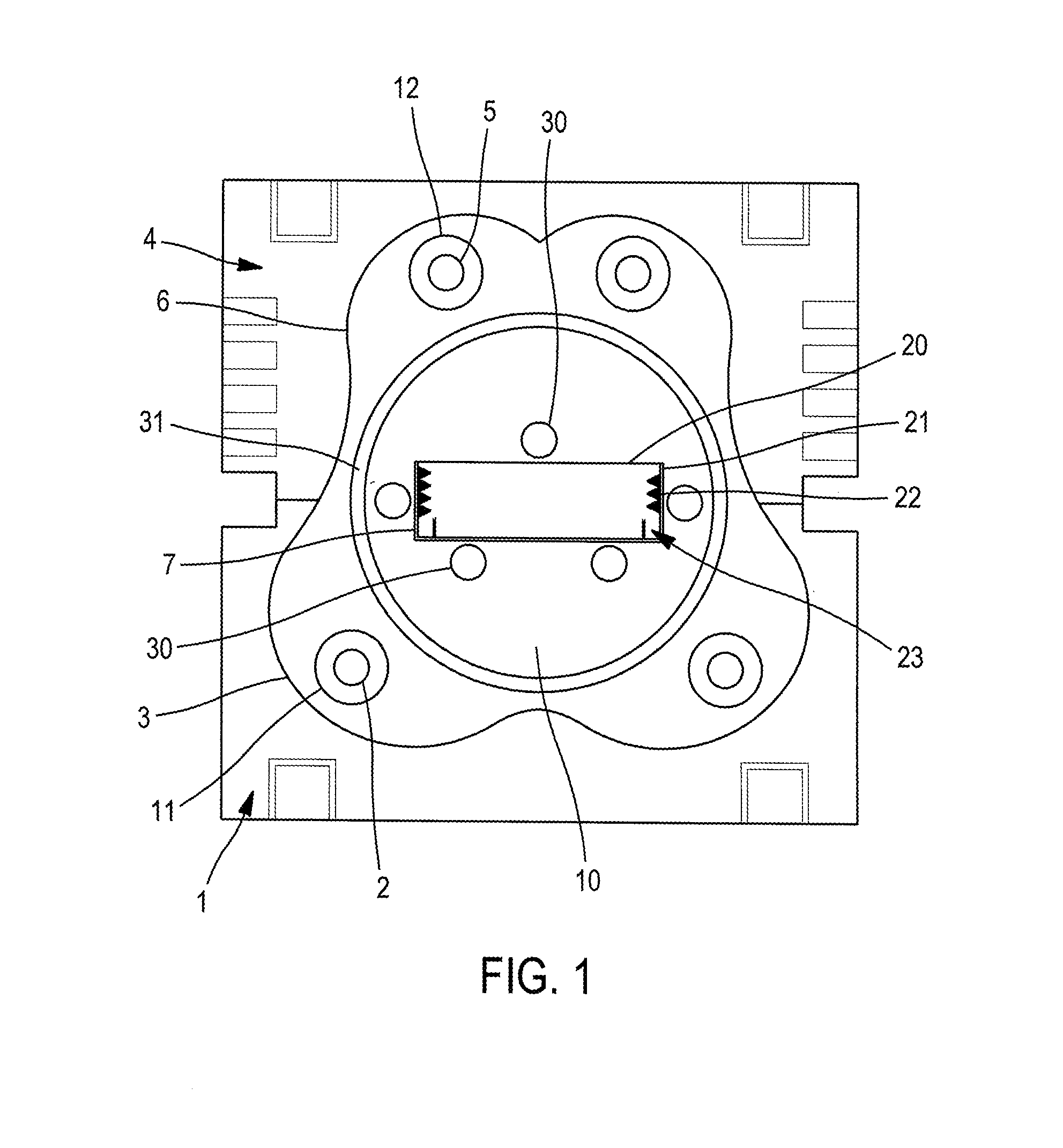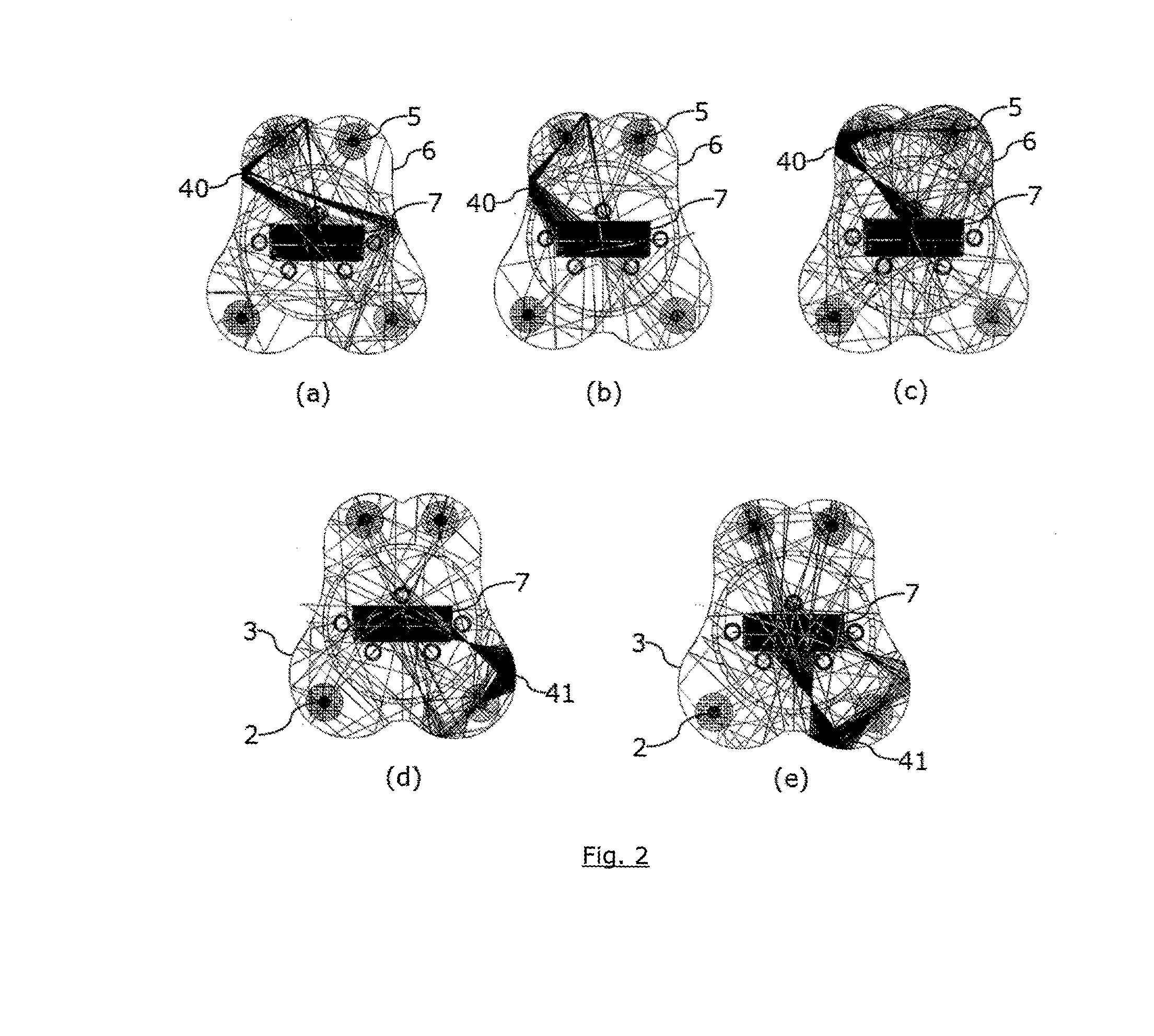Device and method for the decontamination of hollow objects such as container caps using UV radiations
- Summary
- Abstract
- Description
- Claims
- Application Information
AI Technical Summary
Benefits of technology
Problems solved by technology
Method used
Image
Examples
Embodiment Construction
[0076]We will now describe, with reference to FIG. 1, an embodiment of the device of the invention for the decontamination of bottle caps 7 in production line.
[0077]FIG. 1 shows a cut view of an exemplary bottle screw cap 7. It comprises an internal cavity 20 surrounded by walls 21. The shape of the surfaces inside this cavity 20 is usually complex, comprising for instance a thread 22 for screwing the cap 7 on a bottle and a plug seal 23 for the air and liquid tightness.
[0078]The caps 7 are frequently made in materials at least partially translucent to UV radiations, such as for instance Polypropylene (PP), High-density polyethylene (HDPE), or polyethylene (PE).
[0079]The device of the invention comprises a decontamination zone 10 elongated in a direction of elongation, in which bottle caps 7 to be decontaminated are inserted.
[0080]The decontamination zone 10 is surrounded by first exposure means 4 and second exposure means 1.
[0081]The decontamination zone 10 is delimitated by a surr...
PUM
 Login to View More
Login to View More Abstract
Description
Claims
Application Information
 Login to View More
Login to View More - R&D
- Intellectual Property
- Life Sciences
- Materials
- Tech Scout
- Unparalleled Data Quality
- Higher Quality Content
- 60% Fewer Hallucinations
Browse by: Latest US Patents, China's latest patents, Technical Efficacy Thesaurus, Application Domain, Technology Topic, Popular Technical Reports.
© 2025 PatSnap. All rights reserved.Legal|Privacy policy|Modern Slavery Act Transparency Statement|Sitemap|About US| Contact US: help@patsnap.com



